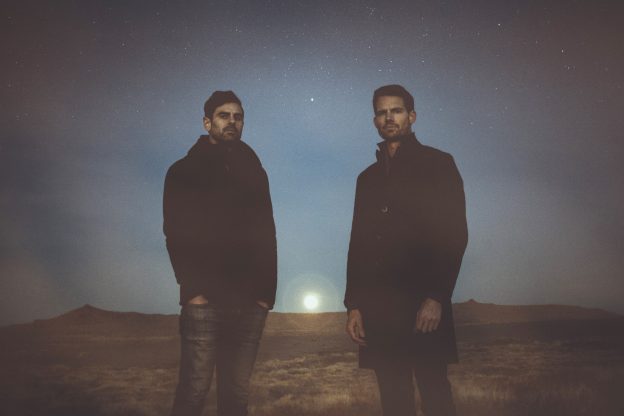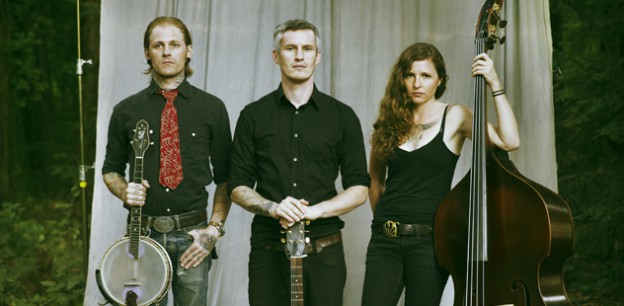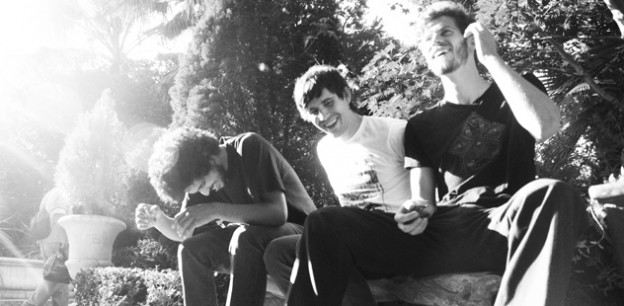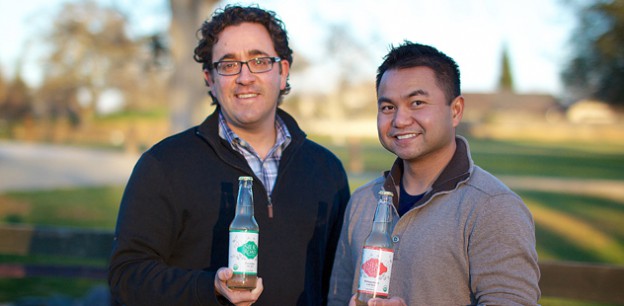Scott Hansen of Tycho hits his stride on his latest album
If you could bend time in your hand, watch life play out through a kaleidoscope, or travel through space, it might sound like a song from Awake, Tycho’s latest album released in March. If you want to simply ride a wave of nostalgia, perhaps losing yourself in a sunrise or a long drive down a twisting road, feeling the sensations of both sadness and bliss, then Awake is your album.
“Awake,” the opening track of the album, is one of those lovely, anthemic, synth-heavy songs you never want to end. It’s airy, warm, repetitive and strangely familiar. It washes over you and draws on your heartstrings.
When I spoke to the San Francisco-based frontman of the electronic post-rock outfit, Scott Hansen, to better understand the album, he was frantically fielding my phone call and several other media calls within a half-hour.
Never have I conducted such a butchered interview. Stationed in Chicago for a show at the Concord Music Hall that night, Hansen managed to squeeze in this interview early that afternoon.
On at least three separate occasions, though, he would have to switch over to another line.
“I thought we only had two of these things, and people just kept calling,” he said apologetically before answering yet another call.
Most likely, his other interviews had been postponed because of the band’s Iowa shakedown days before, he later explained. First, they were stopped and searched by troopers alongside a cornfield, drug dog and all (their tour van looked identical to a trailer that had been busted for 75 pounds of weed several months prior). Then their trailer wheel broke. They barely made it to Minneapolis before show time, and were onstage only 15 minutes late.
Yet another talent originally from Sacramento, Tycho is deserving of all said publicity. While he’s had a later start than some musicians, Hansen has been writing and recording music solo for more than 10 years as Tycho (the project was named after the 16th-century Danish astronomer Tycho Brahe). This was after Hansen dropped out of art school at the University of San Francisco, spending his early 20s successfully building a name for himself as a freelance graphic designer under the pseudonym ISO50, designing anything from album art and posters to magazine covers and snowboards.
Hansen dabbled in music all the while, but it wasn’t until a serious injury took him away from work for two months at age 24, that, for the first time, he could focus all of his energy on just writing music.
“I think it was just about getting to a point skill-wise where I felt like I could create the music I was hearing in my head,” he recalls.
Shortly thereafter, he self-released his first EP, The Science of Patterns, in 2002. Two years later, he followed that up with his first full-length, Sunrise Projector. In 2011, Hansen released his second LP, Dive, on the indie record label Ghostly International, gaining attention from the likes of BBC music, Pitchfork and SPIN. Now, with the release of Awake, his second LP for Ghostly, Hansen is on tour as Tycho the band, accompanied by guitarist/bassist Zac Brown and drummer Rory O’Connor.
Awake, Hansen says, is the first “true Tycho album.”
It’s Tycho’s first cohesive body of work, he later explains. The album cover, which is, of course, designed by Hansen, reflects this. It is simple and elegant, with nothing more than a multicolored, striped orb on the front. It’s meant to be flag-like, Hansen says. The orb represents an iconic sun; it is a consistent motif in Tycho designs. Each of the eight color bands, or stripes, appearing on the orb on the Awake album cover represents a track on the album.
To create the album, Hansen and Brown moved Hansen’s studio to a cabin in Lake Tahoe last winter. From there, they relocated to Santa Cruz, where they met up with O’Connor to integrate the drums.
“I definitely think Tahoe had a lot to do with the sound,” Hansen says in retrospect. “It’s this sort of insulated, isolated space, and I think that had a lot to do with the stuff that came out.”
In the following excerpts, Hansen further discusses the album and what drew him to writing music in the first place.
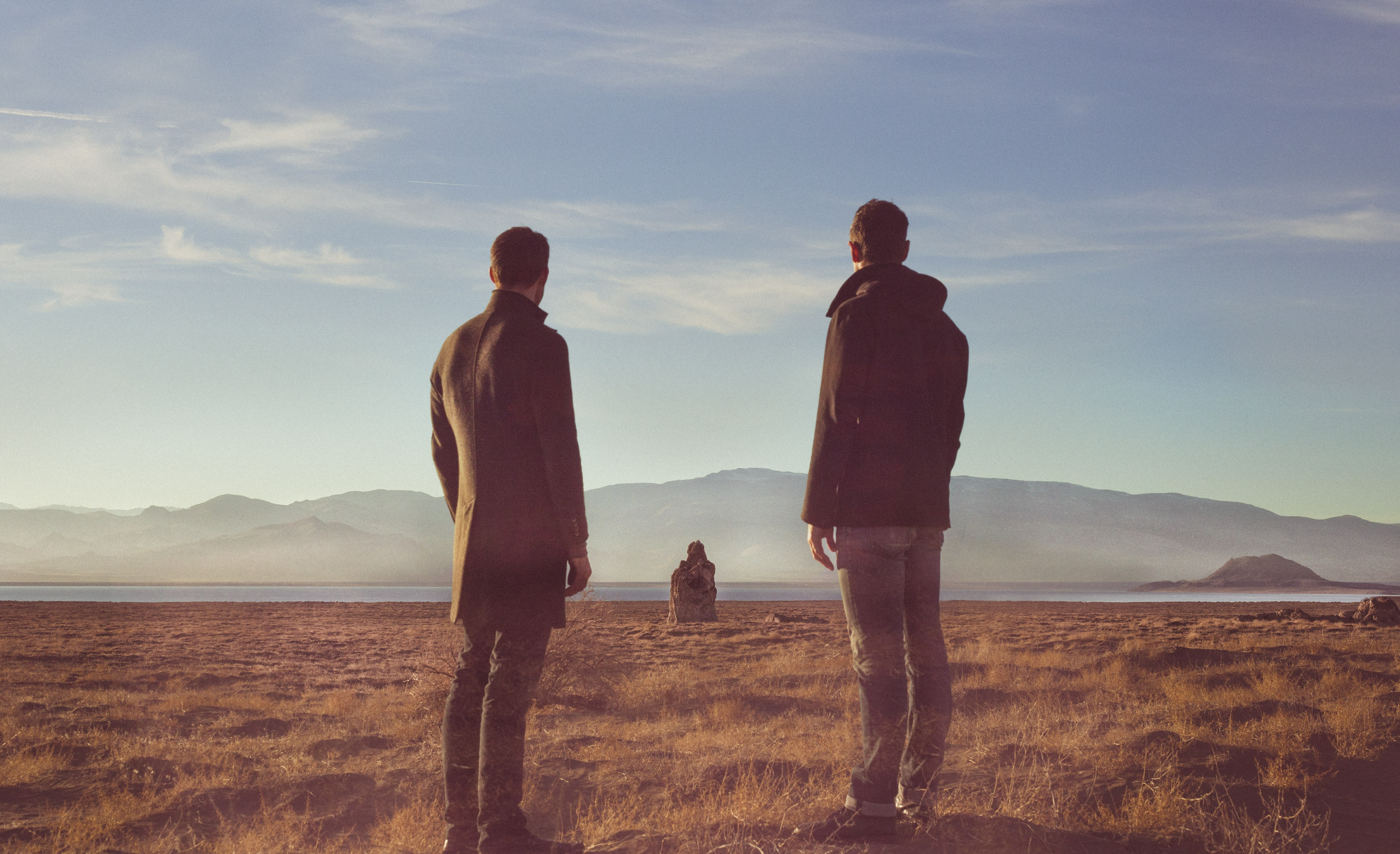
I think you mentioned on your blog and elsewhere that you kind of define this as the first true Tycho album. Could you talk a little bit about that?
Yeah, I mean, that’s not to diminish any of the other records; I’m proud of those. But I felt like those were more of an education and learning process for me as a producer. There were a lot of ideas and things I wanted to do with this record that I wasn’t able to accomplish on my own, with my own skill set and my own resources. So this time around, I worked with Zac Brown. He was on a couple songs on Dive. Then we brought in Rory O’Connor as a drummer for the live tour, for Dive. During that time, I felt like everything meshed, and I wanted to capture that for this record. Basically, all of the things that I had been envisioning for all these years started coming together in a live show. So, this was the first record I felt like the whole vision came together and crystallized as a fully realized idea.
Are there one or two examples you can give of things that you wanted to accomplish with this album that you couldn’t accomplish in the past?
Definitely the rhythm section. I think you just make a different kind of music when you’re sitting by yourself and just layering tracks than when you have three people in a room working off of each other and moving and reacting and all that. It was different in a lot of ways; it was more visceral and more on the fly, and that led to arrangements that I think were more focused and had more movement and dynamics.
So you had worked first with Zac in Tahoe and then with Rory in Santa Cruz?
Yeah, so we decided we wanted to do this more in a traditional way, where we went and took this specific period as an intensive time for writing and creating, as opposed to my other records, which were compilations of ideas I had been working with over a period of years. So we decided to remove ourselves from my studio and the city… So we just tore up the studio and reset it up in a small cabin up [in Tahoe] and spent a few weeks hashing everything out. I came back, worked on that stuff for a while, and then we met up with Rory in Santa Cruz. That’s where all the arrangements came together. Then I went back, did some more work, and we all met up in San Francisco in another studio and finished everything off.
So you go by the moniker Tycho, after Tycho Brahe. Why?
I came across his name a lot during the years I was studying a lot of astronomy-related stuff. I wanted a name that didn’t have any loaded meaning.
You had that window of time [when you were injured] when you started to put some music together for Science of Patterns. But at what point had you developed a music background, or an interest in playing music? Had it been a long time coming?
No not at all. I had been messing around with things for, I’d say, two years prior to that. But before that I had zero musical experience, which I always thought was kind of weird. I just never had that moment; it was never presented to me in the right context. I’m a very technically oriented person. I think I was originally in San Francisco when I started in my second year of college. I got introduced to drum and bass, and then a lot of electronic music for the first time… I had listened to rock and heavy metal, so it never occurred to me how it was made, just because it was taken for granted. But this other stuff, the sounds were so foreign that I was really interested in how it was made, and it just seemed like something I could do, whereas the guitar and drums, for whatever reason, to me seemed a leap for me to be able to learn those things. It seemed so foreign to me. But with the machines, I naturally gravitate toward those things. So that was the entry to the whole thing. But it’s interesting, because later, I started working more and more with traditional instrumentation, and learned guitar, drums and bass, and all that stuff.
See Tycho live in Sacramento at Harlow’s on May 10, 2014. Dusty Brown will also perform. Doors will open at 8 p.m. for a 9 p.m. show. For tickets ($20), go to Tychomusic.com or Harlows.com. UPDATE: This show is currently sold out!
The Devil Makes Three teams up with a country music legend to create their darkest album to date
If The Devil Makes Three was playing music 80 years ago, they would likely be playing saloons with maroon interiors and raucous patrons.
Pete Bernhard, Lucia Turino and Cooper McBean emerged as The Devil Makes Three in Santa Cruz in 2001, after making their way as far west as possible from their hometown in Vermont.
“It was about as far as we would get from Vermont; it seemed like an adventure to us,” Bernhard says. “[California] was somewhere I had been before, but really didn’t know much about.”
Since their beginnings, traveling has been a constant. They bounced around the United States, even landing in Midtown Sacramento and Davis while Turino attended UC Davis. (Bernhard still has a 916 area code, in fact.)
As far as traveling goes, “We really had it in our minds,” Bernhard says. “But the band gave us a reason to do it… We had no idea how much we would end up doing it as a band, but it suited us. It definitely suited us, and I think it still does.”
Along the way, they have mastered a sound that falls somewhere in the realm of jug bands, blues and New Orleans ragtime, playing renowned festivals like Hardly Strictly Bluegrass, and sharing the stage with the likes of Willie Nelson and Emmylou Harris.
With both Bernhard and McBean on banjo and guitar, McBean on the musical saw and Turino on upright bass, it is easy to let your ears take you back in time.
In October they released their fourth studio album, I’m a Stranger Here. Days from now, they will embark on a tour to promote the record, making a stop in Sacramento in early February for the first time in more than three years, Bernhard estimates. The band will play Ace of Spades with The Brothers Comatose on Feb. 7, 2014.
“Harlow’s is the only venue we’ve ever played in Sacramento,” he says. “This is the first time we have played a venue in Sacramento that’s bigger than Harlow’s.”
The last studio album the band released before I’m a Stranger Here was Do Wrong Right in 2009, recorded at a house in Davis, and mixed at the Hangar, Sacramento’s well-known recording studio.
As far as I’m a Stranger Here goes, it is their first studio record that they have not self-produced. Instead, acclaimed country musician and producer Buddy Miller took on the task, after meeting the band through a shared record label and management company.
Miller suggested they record at Easy Eye Sound, Dan Auerbach’s (of the Black Keys) recording studio. In addition to playing on the album himself, Miller also brought on members of the Preservation Hall Jazz Band, of New Orleans, to perform on the record.
The result? An album that is impossible not to listen to without bouncing or smacking your knee.
“One of the things we’ve always tried to do with our records is capture the feeling we have playing live, and it’s always been a really hard thing to do,” Bernhard says. “I think this record was the most fun to make, of any record we’ve ever made, and I’m hoping, if anything, that that’s transmitted.”
Beneath the thrill of the fiddles and banjos, however, are somewhat dark and sobering words. Though religion has never played much of a role in the members’ lives, biblical themes crop up throughout the album.
“I know this album is definitely a little bit darker than some of our previous records, and that’s just circumstantial, honestly,” Bernhard says. “I didn’t set out to do that necessarily, but as we put the record together, those were the songs that came to the surface as the best ones.”
In “A Moment’s Rest,” he laments “Lord, I got a heart full of hatred, for me there sure ain’t no cure. I wake up and I’m running, I don’t know what I’m running for.”
Simply put, it’s a song about ceaseless dissatisfaction, he explains.
“I think I’m a pretty dissatisfied person, and so are lots of people. It’s just a song about how there isn’t escape from whatever it is that you might not like to think about in life. There’s no way out,” he says. “We’ve done a lot of traveling, we’ve done a lot of playing, we’ve done a lot of drinking, just like anybody trying to, you know, figure out how to get around these things. Ultimately, the song is about how there is no way around these things.
“That’s another thing that keeps me going, as far as being a musician goes, is I’m never satisfied with anything that I do, either,” he adds. “I always think that I could do something better, and I hope that I always could. So, dissatisfaction is a theme in my lyrics, and probably always will be.”
Performing runs in each band member’s blood; all three come from a line of performers. Turino’s parents were dance teachers, and Bernhard and McBean both were surrounded by musicians growing up.
Bernhard and McBean bonded over music early on.
“Both of our families had huge record collections, and I think that’s really where we got our start,” Bernhard says. “When I was 12 years old, my brother gave me all the Willie Dixon recordings, and Howlin’ Wolf, and the complete recordings of Robert Johnson, and a lot of other blues artists that he thought I would like.
“And I love that stuff. That’s still what I love,” he adds.
Even before Devil Makes Three became a band, they were friends first, as far back as high school.
“We’ve always wanted to do this, and we’ve been pretty single-minded about it,” Bernhard says. “And that’s held us together.”
What are you most excited about right now?
I think I’m most excited about this tour we’re about to go on. Well, actually, I’m more excited about our new record that just came out. I’d say that’s probably the thing I’m most excited about. This tour will be the first time we bring the album out to the West Coast. Other than the two shows we did in San Francisco and the two shows we did in Santa Cruz, we haven’t actually toured the West Coast with this record yet.
Regarding I’m a Stranger Here, what prompted that title, because for me that is a familiar feeling.
Us doing what we do, it is a problem that we are strangers everywhere we go. Every day we’re in a different city, and we don’t spend a whole lot of time at a home. It also comes from an old Gus Cannon song.
I think I read that it was Buddy Miller’s idea to go to Dan Auerbach’s studio?
Yeah, it was Buddy’s idea. I had never even heard of Dan’s studio. A lot of good stuff has been recorded there. Dan and Buddy are friends, and he thought it would be a cool place to do it, and that it would have the right feel. And I thought it was perfect, it was a great idea. It was a lot of fun, and we really enjoyed working with the engineer, too.
How long were you guys there?
Not long. I’d say two weeks. We recorded the whole album live, for the most part—all the basic tracks and live vocals—so when we got a good take it was pretty much done. We didn’t take a ton of time in the studio. We spent probably as much time mixing as we did recording.
How did you guys pull the Preservation Hall Jazz Band into playing?
That was Buddy. He played with them before. He suggested it, and I thought it was a great idea, but I had no idea that it could actually happen. He called them up, and we got them on the record. It was amazing. I was really happy that all that came together.
Another thing that I heard on this record was a number of religious references. So why the religious references, and why even did you guys choose Devil Makes Three? Did it just sound cool, or was there anything behind that?
Devil Makes Three was chosen by a friend of ours, actually, when we were all having a big argument about band names. We all agreed upon it, and that’s how we ended up with that name. I guess it did just sound cool, but also there were three of us, and it’s a reference to a song, which, like I said, we like to do that in our songs.
And the sort of biblical references…
Oh yeah. I love gospel music, it’s definitely a big inspiration to me. I listen to a lot of old gospel groups, and I just love their music. A friend of mine in Santa Cruz got me interested in it a long time ago, and I’ve always really loved that kind of music… Also, the Bible is a story that everyone knows. Almost everyone, or it seems like almost everybody, knows part of it in the United States… The stories in the Bible are some of the oldest stories around, and I think it’s an interesting place to draw from in terms of material, and just to sort of try to tell a story within it.
What sort of impact were you hoping to have on your listener, or your listener’s ear, with this album?
Oh, well, I kind of leave that up to the listener, you know what I mean? I think that music is up for interpretation. Whatever impact I hope to have isn’t necessarily going to pan out… People’s interpretation of music is a strange thing. Sometimes people are talking to me about a song, and they’ll say it meant this to them, and I’ll think, “It didn’t mean that to me at all,” but that’s the great thing about music.
The Devil Makes Three show at Ace of Spades has Sold Out. Be sure to check out I’m a Stranger Here at Thedevilmakesthree.com.
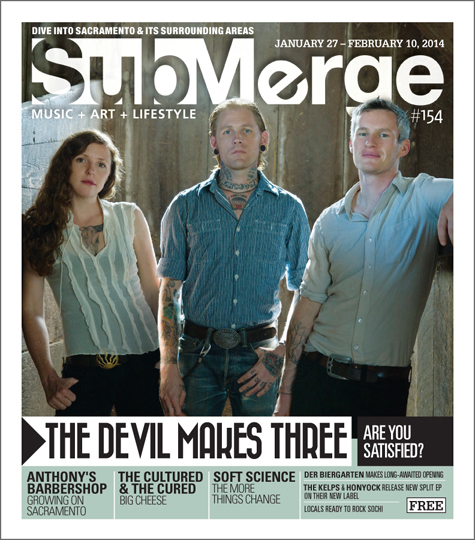
Sacramento experimental band Cove readies for first EP and tour
It’s two weeks before Scott Ferreter’s band Cove drops its first EP (mostly self-recorded in Ferreter’s mom’s basement), and before the trio goes on its first tour in the freshly purchased “Cove Mobile.” He doesn’t explicitly state it, but Ferreter sounds like he’s floating on nirvana right now.
The 24-year-old Sacramento native patiently waited for these pieces to come together since he left his last band, Comfort Twin, in Santa Cruz more than a year ago.
“It was a zoo to begin with, an eight-piece band and half lived in the Bay Area and the other half in Santa Cruz,” he recalls. “It was a really fun band. Eight pieces is a real pain in the ass for getting together, but once you got it together, in every sense of the word, it was great.”
Ferreter moved back to Sacramento when his dad was diagnosed with cancer, and shortly thereafter Comfort Twin dissolved. The move became an opportunity to create the band he always wanted.
“Once I moved back I was really excited to start a more straightforward band,” he says. Through advertising and hanging fliers at Javalounge downtown, Ferreter met drummer Steven Cranston and 27-year-old bassist Charlie Dale.
The three fine-tuned their sound and lyrics, and had the EP and tour upcoming when Cranston left the band after getting a job. Ferreter became frantic to find a drummer last-minute.
“Our musical existence was weighing heavily on finding a drummer. I was worried we would have to settle so it was humorous when Omar pulled up and he was exactly what we wanted,” Ferreter says. “Charlie and I pontificated on finding a drummer, saying we should get someone who is good at even asking for money at the end of the night. The two of us, we’re not tough guys, so when Omar said the other day, ‘two things I really like is dealing with sound guys and dealing with club owners,’ it was meant to be.”
Omar Barajas, 23, also from Sacramento, joined Cove after stints in other local bands.
“The other bands I played in were completely different,” he says, on break from his day job. “The first was instrumental, then I toured with Sister Crayon and that’s electronically driven with heavy beats. But Cove is really mellow.”
It was a welcome change. Barajas, whose major influences are jazz and bands like Silversun Pickups, wanted a slower pace.
“I was used to just banging my drums, but now I’m focusing more on my technical skills,” he says.
He joined right after Cove recorded its EP. The new trio had their first show in mid-October and Barajas says he’s been able to see the backbone of the songs and insert his own style.
“Scott is a good songwriter, so it’s easy to get lost in the music.”
Ferreter says most of the seven songs on this EP came about from jamming together.
“When I got to Sacramento I had all these songs that I wanted to put on an album. As we started playing together, it was immediate, we saw this energy together that we couldn’t create on our own,” he says. “Cove is my first experience of actual co-writing. These sounds would not have happened had these exact people not been together at that time. Everyone has differing interests and musical paths but there is enough overlap in the stuff that matters: how to approach music, the process of playing together.”
And then there is a good amount of absolute happenstance, Ferreter says.
“I’m a Craigslist junkie, mostly in the name of getting a band together, so if a show needs to happen, I’ve got the stuff for that. I found this $30 electric piano and like a week later, we met Charlie and piano was his first instrument,” Ferreter says. “The last band he was in, he was playing drums but he was really excited about playing piano, and it became instrumental to us as a band.”
On their self-released album, Dale plays electric piano, synthesizer and bass. A few songs also have horns with help from one of Ferreter’s former bandmates, and extra vocals with help from David Lipp, who recorded half the record and, according to Ferreter, “took the project from an absolute zygote to a complete creature ready for the world.
“David (Spare Room Studios, San Francisco) did all of the engineering and I just cannot say enough about it,” he says. “He did it out of the love for the music. He took a handful of sand and turned it into a nice tropical beach. I’ve come to a loss of words, I can’t say enough.”
Some sounds from the album will obviously not be part of the tour, such as Lipp’s vocals, the horns and a full-sized harp that Dale received as a birthday rental.
“Of course in the middle of recording this album, we have a harp so it’s a no-brainer,” Ferreter laughs.
The album doesn’t have a theme per se, but the band thinks of it as more a process of selection.
“These are the songs over the last year we’ve felt a lot of energy from. We were thinking of timing, of this era of our lives. We have some songs that are some of our favorites, but we didn’t end up including them because certain songs feel like they ripen and will start rotting soon thereafter. We play what’s feeling ripe right now, what’s relevant right now. It was also about what tools we have. We have some grandiose ideas for other songs but don’t have what we would need to record them yet.”
For now, the band says, the EP and the tour is the direction they’re moving musically. It’s not a hint of what they’re doing—seven songs could be considered an album—it’s a full piece of pie.
“Basically,” Barajas adds, “If you appreciate good songwriting and cohesiveness, you’re gonna dig it. If you like folky writing, you’re gonna dig it.”

The tour and EP release party start at Luigi’s Fun Garden Nov. 7, 2013 with tickets on a sliding scale from $5 to $10. The orbit of the tour will be around Seattle, Olympia and Portland and will last two weeks. Check out Covetheband.com for more information and to sample two recordings.
World travelers put a multicultural, organic spin on soft drinks
When New York City Mayor Michael Bloomberg started grinding his political ax against the soft drink industry and its so-called promotion of Big Gulp-sized sodas, the sugary libation was instantly vilified as the root cause of all that is unhealthy in the United States.
While Bloomberg’s ban fizzled out, courtesy of a judge’s overruling of the law just one day before it was set to take hold of New York soda lovers, the debate continues across the nation, but for two locals—a microbiologist previously with Genentech, Srijun Srinuanchan, and a former corporate sales representative, Payam Fardanesh, turned natural soda makers—it’s really as simple as the old adage: everything in moderation.
“Soda is a treat. It has sugar, but our soda is at least made with good stuff. It’s made with real sugar. It’s organic and there are no chemicals, so it’s good as it can be for a soda,” Srinuanchan says. “And, again, it’s a treat. It’s like having a slice of chocolate cake. Sure you can make chocolate cake healthy but that takes the fun out of it.”
For the business partners, who formed a close friendship while engaging in one of their shared passions—traveling the world, the experience of launching Silk Road Soda Company, Inc. has been a dizzyingly meteoric enterprise, they say. It was only about a year ago that the two made the decision to set out and make their entrepreneurial dreams come true with their organic, Iranian-inspired sodas.
“It’s been unreal,” Srinuanchan says. “We can’t believe the level of support we’ve received from everyone.”
It was their love of travel and appreciation for different cultures that inspired their soda creations, even the name of the company, taken from the Silk Road trade route that existed centuries ago, exemplifies their passion—Fardanesh spent his early childhood in his native Tehran, Iran, while Srinuanchan’s Laotian and Taiwanese roots drive his creative pursuits.
When the duo decided to share their cultural experiences through soda, they took to Srinuanchan’s Del Paso Heights kitchen, turning it into a lab of sorts and, drawing on his experience at Genentech, worked on the formula until it was perfected. Although they started with 10 potential flavors, the partners settled on three; mint, cucumber-mint and pomegranate-mint, but say to look out for some of the seven remaining flavors to hit the shelves in the future.
The duo then worked with a food lab in Santa Cruz, Calif., Venus Research and Development, where the formula was perfected for mass production and, most importantly, to obtain organic certification.
“Sharing a little bit of the Eastern culture with the West was kind of cool to us,” Fardanesh says. “We wanted to represent the region that [these flavors] originated in so, for instance, the gold flavor is exactly the way my grandmother made it, so it’s her recipe. Now, we had to alter the recipe some so we could lower the calorie count and get it up to organic standards.”
“From there we went to the cucumber mint; in Iran and in Greece cucumber is shaved into the drink,” Fardanesh continues. “With the pomegranate, it’s really popular in the region. In Iran people eat pomegranates like apples, so it seemed natural.”
Manufactured in Sonoma County in the sleepy town of Healdsburg, the nearest facility that could produce their product at the level they aspired, and where they could also pasteurize the drink—meaning no preservatives were added, and in the soda business that’s basically unheard of, they say.
“That in a soda pop, in and of itself, is like whack-o. It’s just not what people do,” Fardanesh says. “Soda pop companies add preservatives so they can bottle [en masse] and keep it shelf stable, but we decided we wanted to keep it pure and use a pasteurization process, and it was expensive, but the markets reacted and understood.”

“Any food, actually,” Srinuanchan adds. “Even potato chips, or even candy bars, anything packaged, most of those items have preservatives, some chemical to keep it from rotting and our product doesn’t have any of that.”
The partners say their decision to use pasteurization methods over preservatives account for the price tag of $1.99 and up, depending on different retailers and restaurants.
For the two enterprising men, their success has been rooted in a community that is eager to see them succeed. From former classmates in their MBA program pitching in on the bottle design to random strangers on their Facebook page, they say community support has far exceeded their wildest expectations.
“The top restaurateurs in town, Pat Mulvaney for instance, tasted our product. You know, we didn’t even know him, and he was very interested and very supportive,” Fardanesh says. “We’re two guys basically selling our drinks out of our truck, literally. When you drive up and pull it out of your trunk, it’s kind of Ben and Jerry-ish.”
Their laid-back, homegrown style hasn’t deterred vendors from carrying Silk Road Sodas—from Sunrise Natural Foods, Corti Brothers and Nugget Markets to restaurants like Hock Farm Craft & Provisions and Thai House Restaurant, their product can be found in more than 22 locations.
Not bad for a couple of thirty-something’s selling a homemade soda out of the trunk of their car, concocted in their kitchen.
Based on a decision to keep the product organic versus local, most of the soda company’s ingredients are sourced from Southern California, Oregon (verbena) and even Florida, via a distribution company in Southern California (cucumber). The two plan on meeting with flavor consultants once again to look through each component in their products to see if they’re doing it right. For them, keeping the integrity of the ingredients is paramount.
Although the company is currently a two-man operation, they say through the community’s support it feels like they have 100 employees. Fardanesh and Srinuanchan are looking forward to taking their product nationally, but not too hastily.
“We want to create a brand identity. We want to make sure people like it, and both of those things are happening, so we think the next area will be San Francisco,” Fardanesh says. “It’s our baby, so we want to watch it while it grows, and we’ve already gotten inquiries from New York and Los Angeles, but we don’t want to stretch it out too far yet.”
“We’d love to go national, but we don’t want to bite off more than we can chew,” Srinuanchan adds.
For those on the Bloomberg soda ban-bandwagon, the soda makers say not all sodas are built alike, but again, moderation is the key.
“I even tell people don’t drink more than one a day, but there’s a cleanliness to it because of the ingredients we use; on the back end is apple cider and white vinegar,” Fardanesh says. “So those are things that aren’t in soda pop. We were even having trouble naming it; is it a soda pop or is it a tea with sugar in it? It’s kind of a tea, soda pop and Kombucha, all mixed into one—it’s from the Mediterranean diet, which the world covets being super healthy, but if you’re diabetic you shouldn’t be slamming them.”


